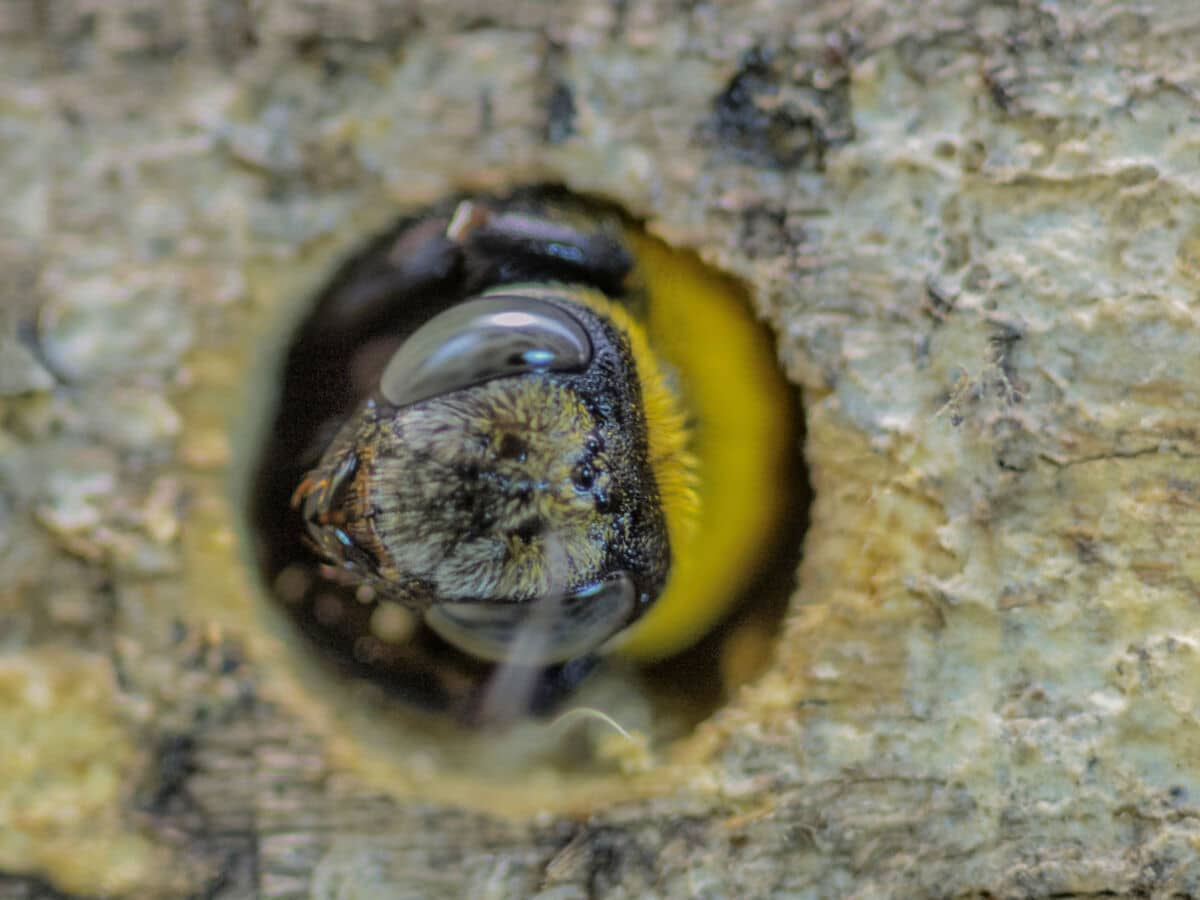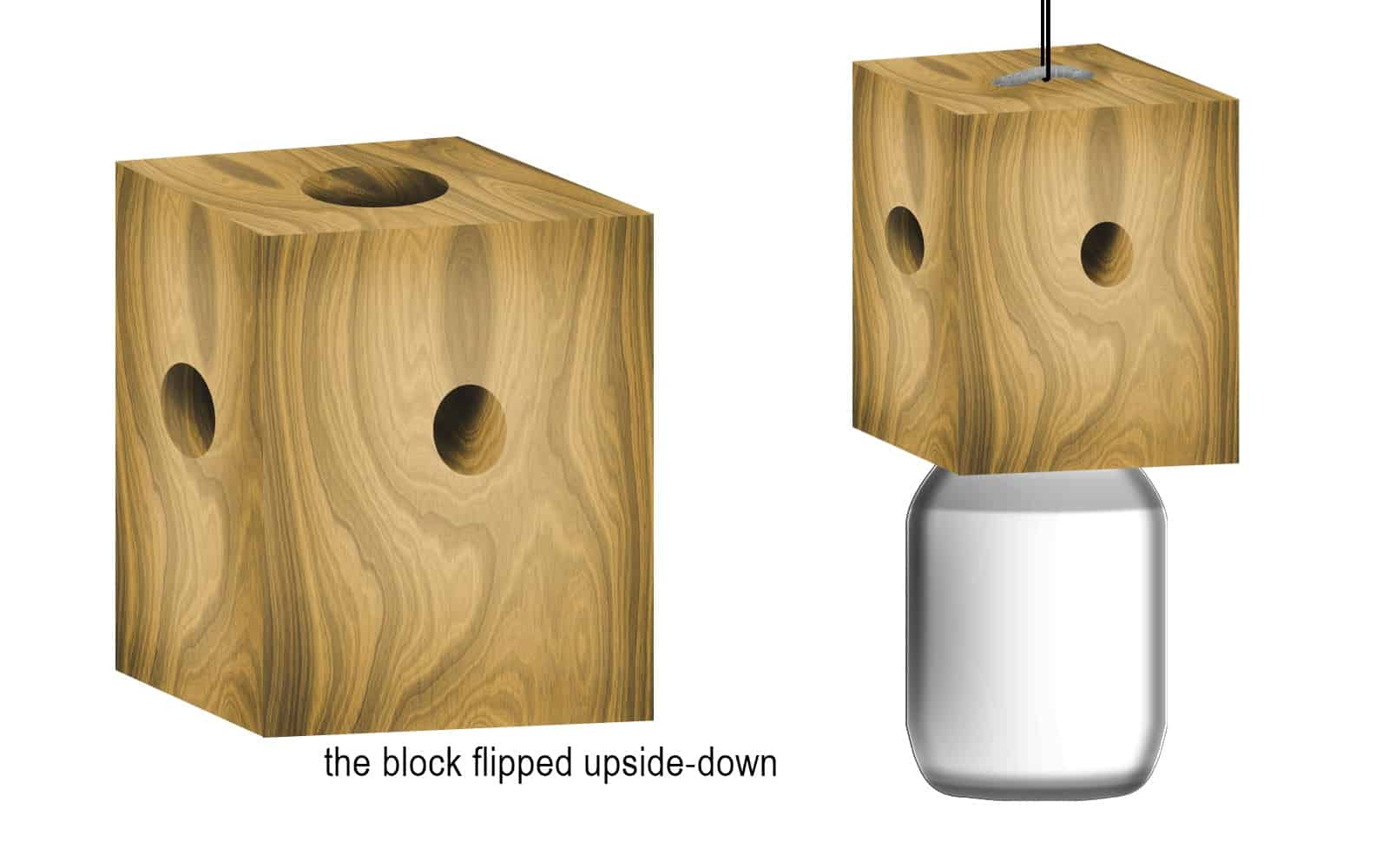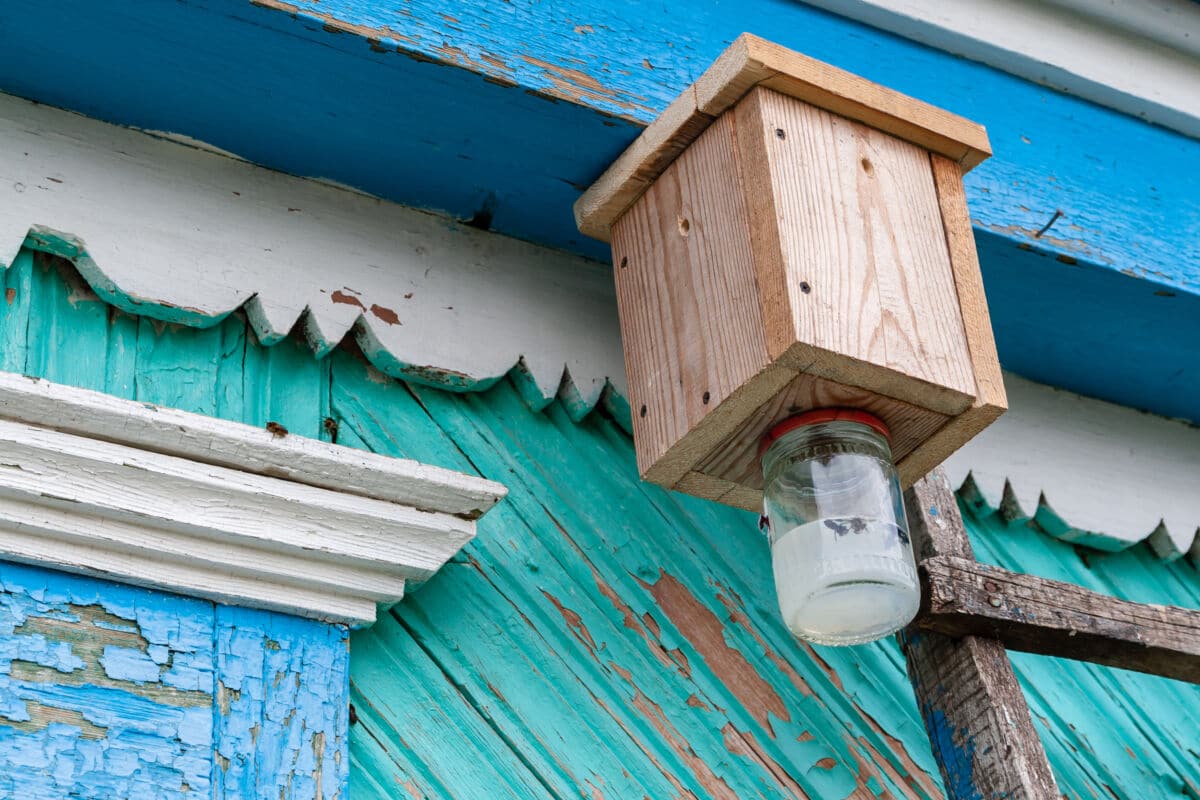How Do Carpenter Bee Traps Work? A Look Inside This Effective Bee Trap
Carpenter bee traps are highly effective. But how do they work? If you know how they work, you can use them more effectively. So let's take a look.

So you’ve bought yourself a carpenter bee trap. But do you know how it works?
It might not sound awfully interesting right now but learning how it functions can help you maximize the effectiveness of its use.
You probably know it’s a predrilled wooden block with holes that eventually trap the bee. But there’s more to it than that, and the details are important.
So here’s what you need to know.
What’s so Bad About Carpenter Bees?

Before we talk about trapping them, let’s first dabble into the reasons why you need to trap carpenter bees in the first place.
Obviously, the biggest concern for homeowners is the bee’s nesting habits. Carpenter bees only nest inside wood, be it a living tree or a lifeless plank. They do this by chewing into it, building tunnels and causing damage on its structural integrity.
Left alone, carpenter bee tunnels invite mold, rot, moisture and other pests into your house. The bees even dirty up your walls, patios and other wooden structures with lines of excrements and pollen pushed out of their holes.
Additionally, carpenter bees tend to do more harm when their numbers go out of control. This happens when a female’s grubs have matured enough to make nests of their own.
They tend to go back to their previous tunnels to lay more eggs. If the tunnels have been occupied, they make new ones close to it.
The result is a bunch of carpenter bees living together and forming a simple social structure. The wood, against all these bees, would crumble away after all that drilling and abuse. It’s no wonder many homeowners exert all that effort into trapping them. It doesn’t help that males are aggressive, and they can be a nuisance, hovering around you each time you go outside.
How do You Build the Trap?
Now that you know how menacing it would be to ignore a lot of carpenter bees, it’s time to build a trap. With this contraption, you won’t be getting rid of all the bees in your neighborhood. You’d just be controlling the number of carpenter bees straying into your property.

This is what a conventional carpenter bee trap looks like.
The trap may seem like it needs a lot of workmanship, but it’s actually very easy to make. In a nutshell, it’s really just a wooden block with pre-existing entry holes on each side.
The wood is then attached on top of a mason jar which will act as the bees’ glass cage. If you want to read the full tutorial, check out this page from My Frugal Home.
So How Does the Trap Work?
The trap essentially copies the carpenter bee’s standard nest. However, it’s made to be more “convenient” to them. It’s hung in a very conspicuous place. It’s made from softwood. And it’s already got holes drilled into it. The holes on each of the block’s side are all drilled upward, and their all connected to a 45 degree drop point that leads to the mason jar.
What happens is that a carpenter bee gets inside the wooden block through one of the entry holes. It then soon finds out that the block is not a great place to build a nest for some reason, so it searches for a way out.
While it tries to find the exit, the carpenter bee instinctively looks for a light source to get itself out. However, since all the entry holes are drilled upward, the light coming from them are effectively cut off.
But the bee does see light from one direction. And that’s from the sharp 45-degree drop point into the mason jar. The bee heads toward that “exit” and conveniently drops in its glass jar prison.
Tips in Trapping More Bees

With the carpenter bee trap, you’ll be collecting bees and protecting your home from all that damage that they can cause. Just remember to keep these important tidbits in mind:
- Drill the entry holes big enough for the bees to squeeze through.
- Drill the holes slanted enough to cut off the light. About 60-80 degrees should be fine.
- Do not paint or put varnish on the wooden block. Protective coatings will repel the bees.
- Keep multiple traps around. Place them in the most bee-infested areas in the house.
- Hang the trap or mount it unto a wall, whichever position works.
- Lace the trap with sugar. Carpenter bees are known to be attracted to sugar.
- Regularly clean the mason jar. Having dead bees can send the wrong signal.
Conclusion
So fundamentally, how do carpenter bee traps work? It’s simple. The trap basically just gives the bees what they want, a convenient nesting site.
However, keep in mind that it won’t work if you don’t destroy preexisting nests before hand. You need the carpenter bees to be tempted into nesting inside the wooden block. Of course, they won’t do that if they already have nests of their own.
Share this post
Save time and money on pest control
Subscribe to expert DIY pest control tips, pest control product reviews and information.




